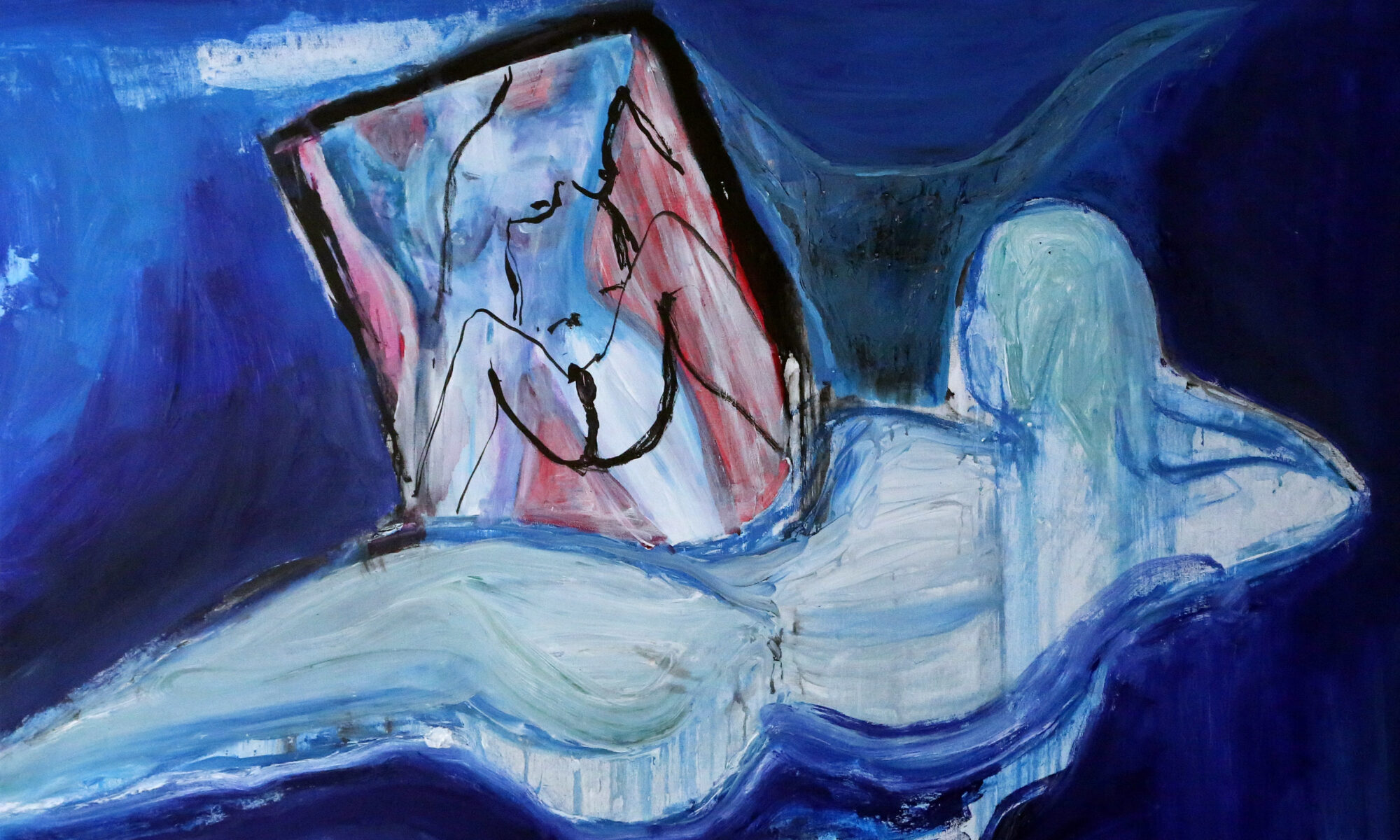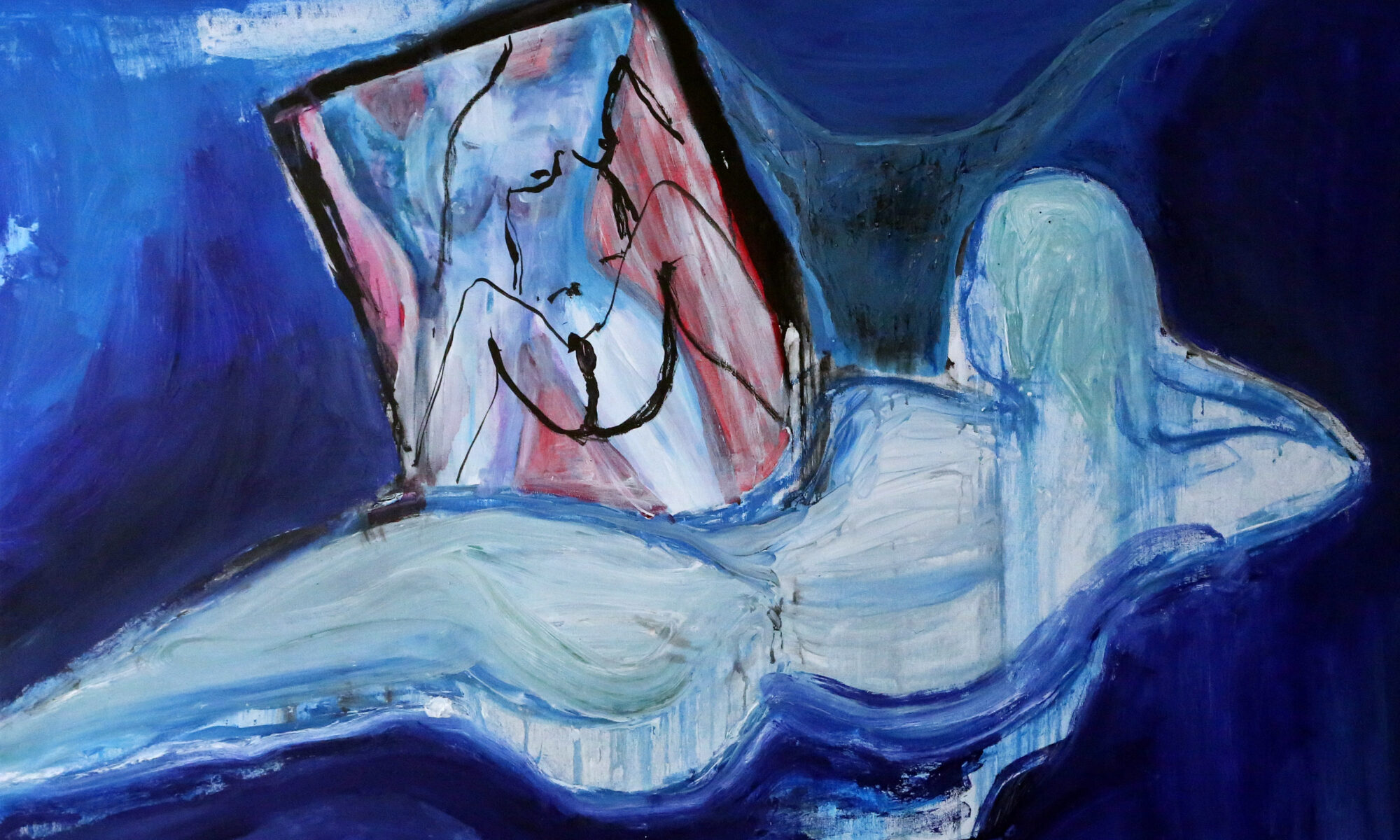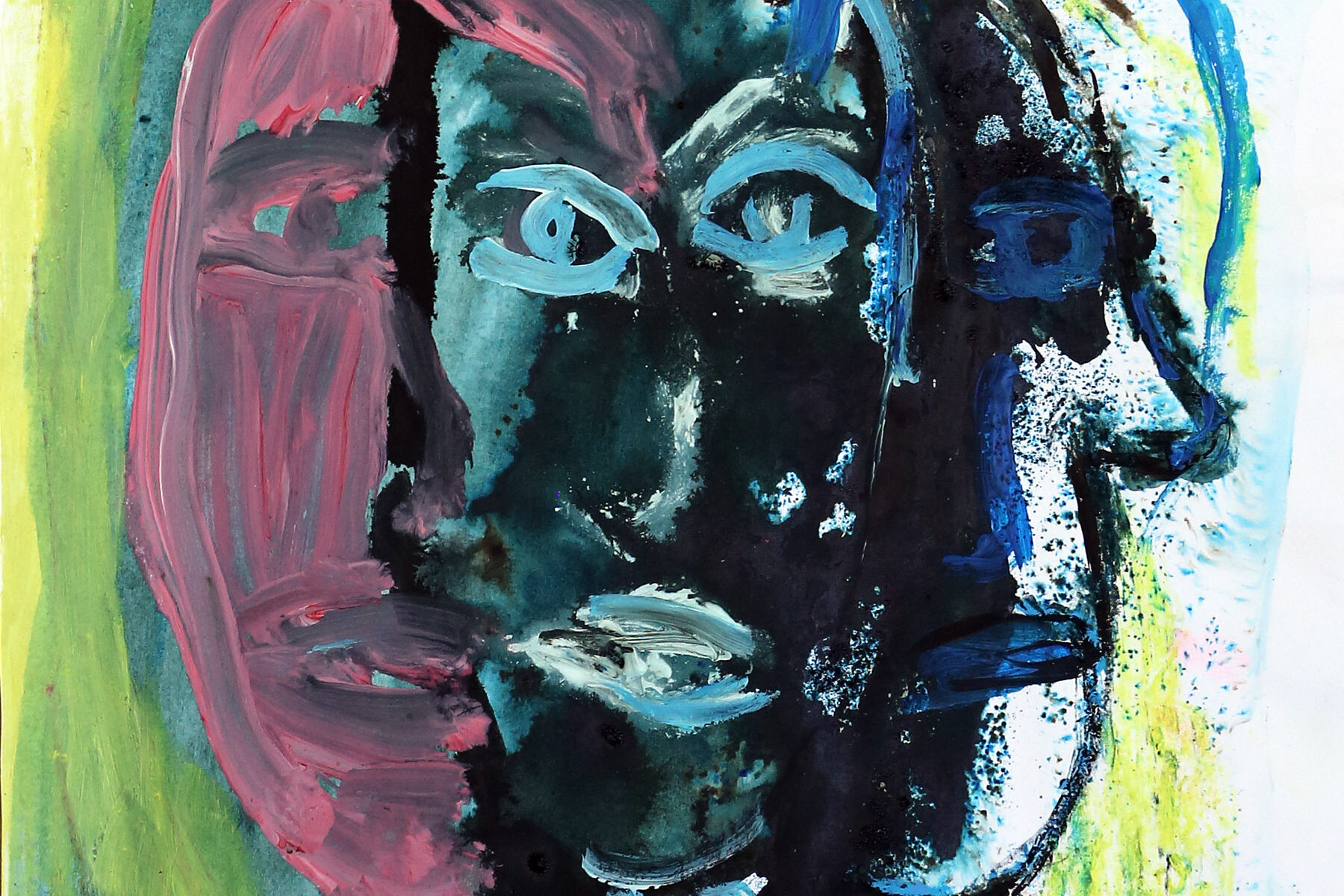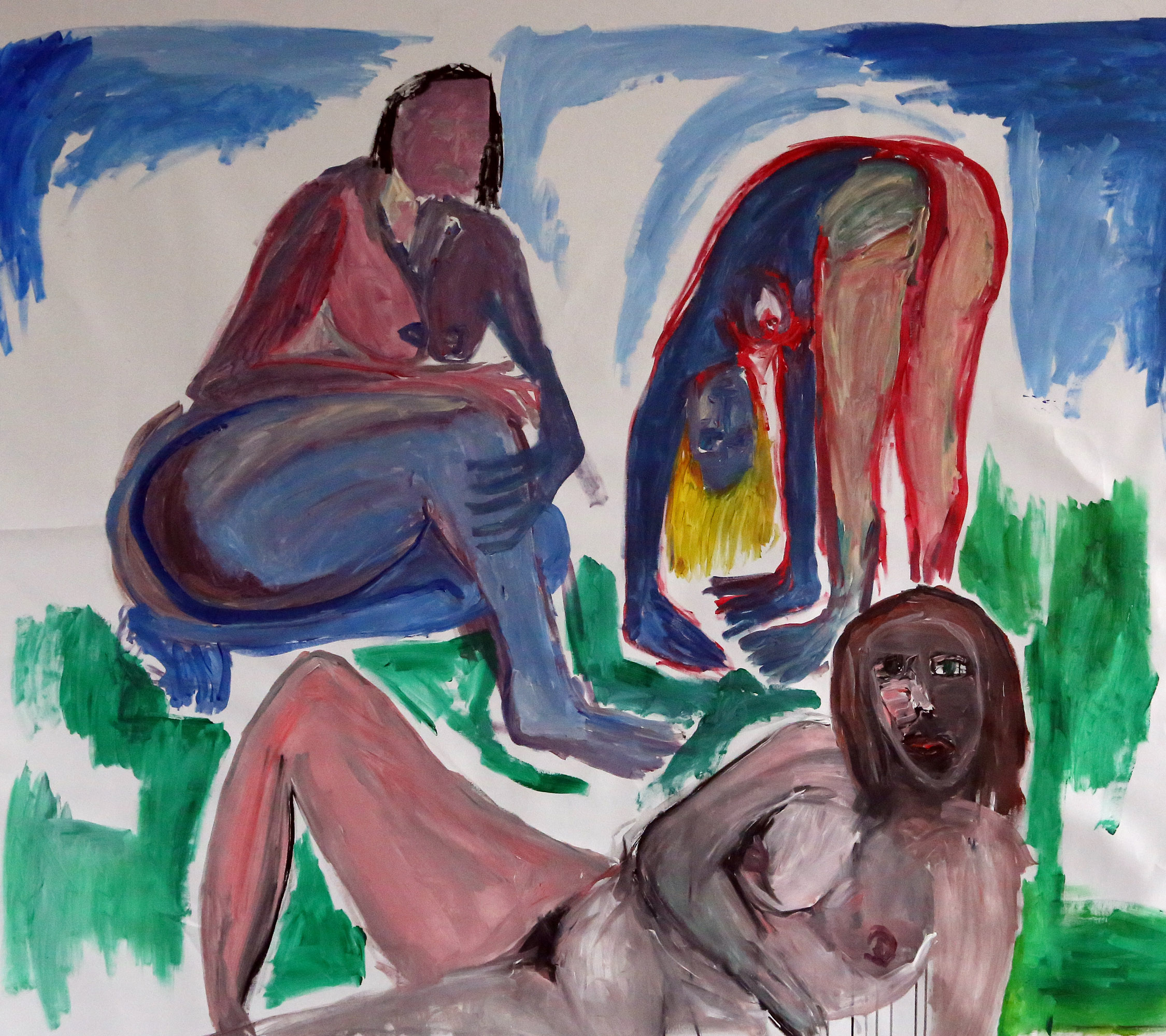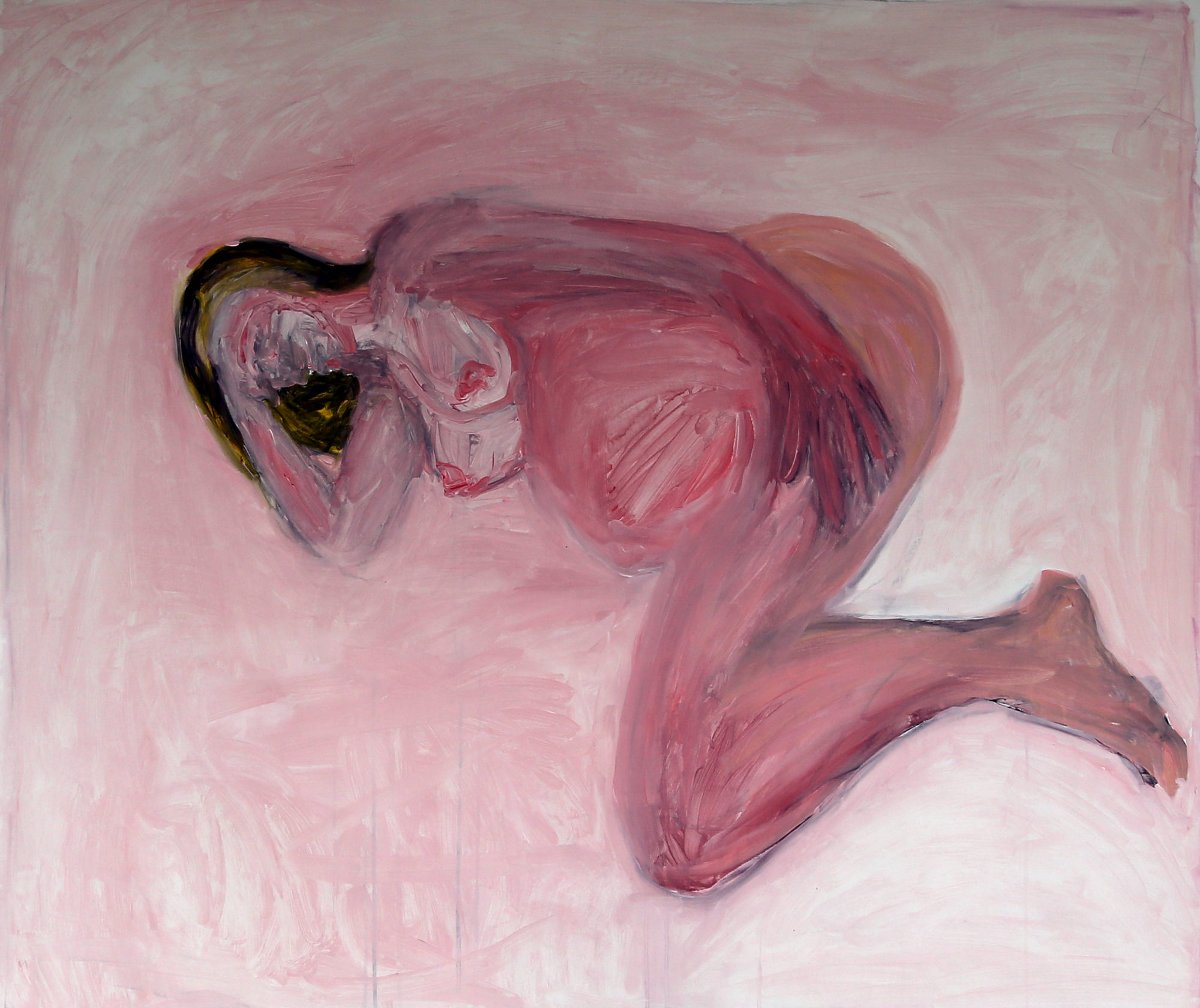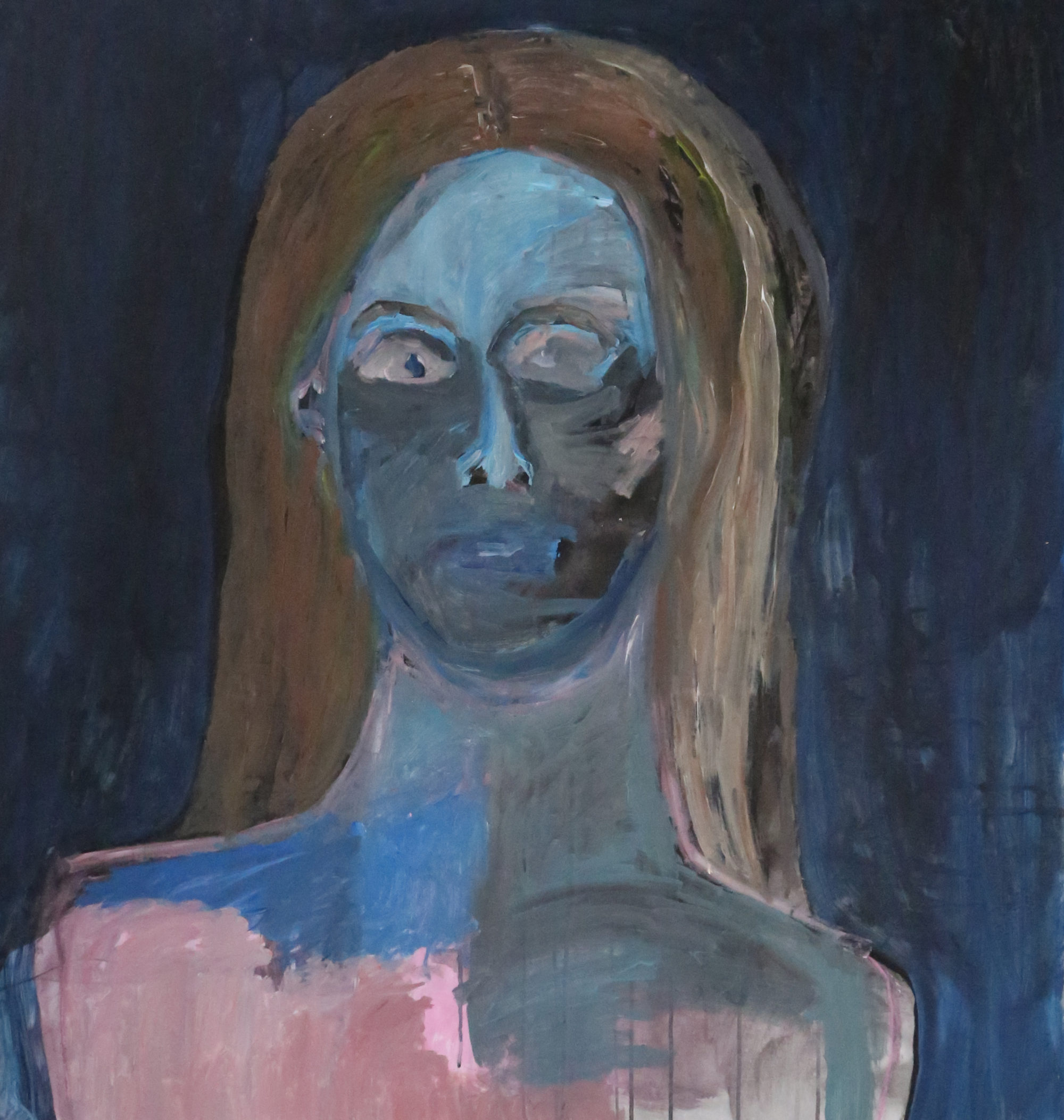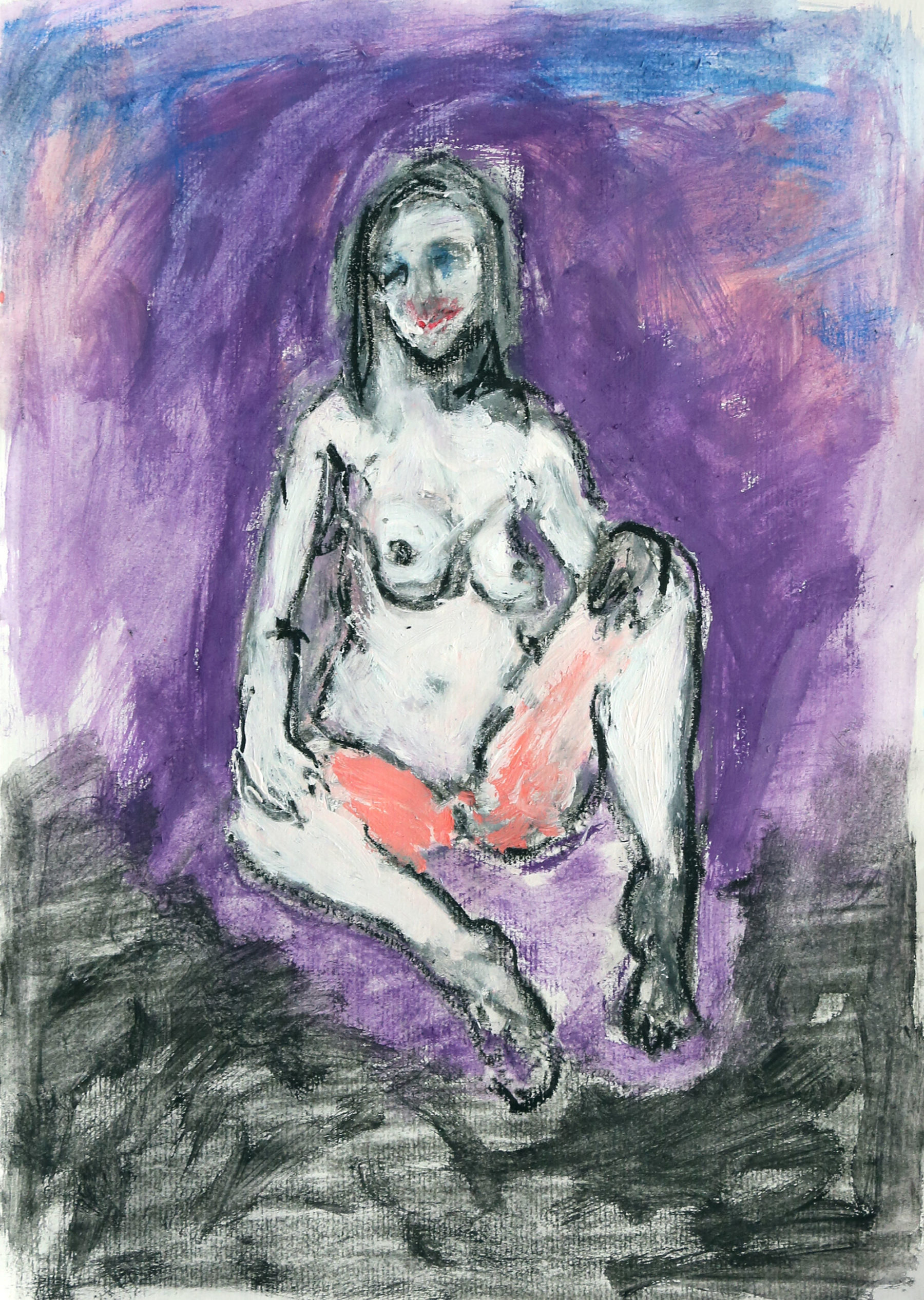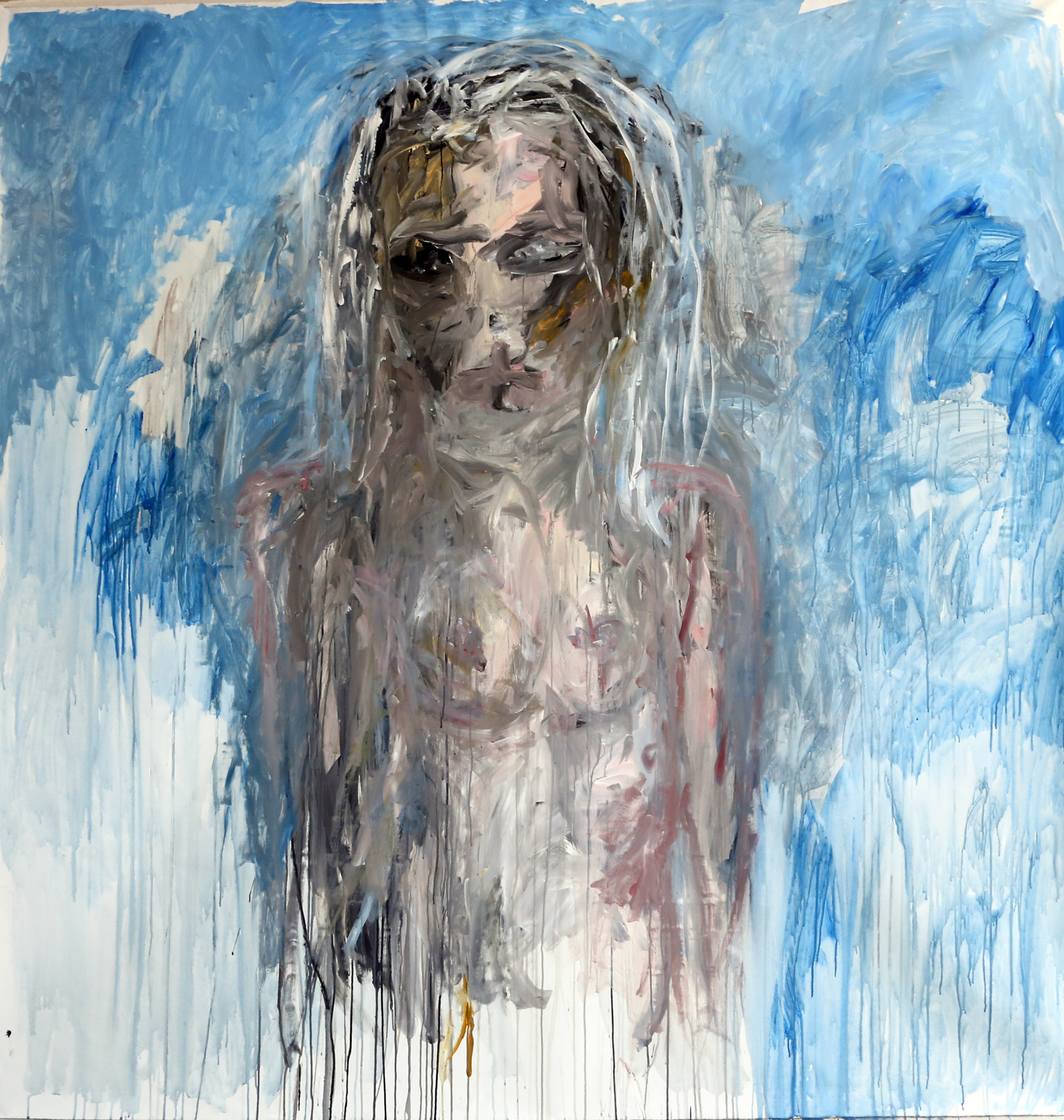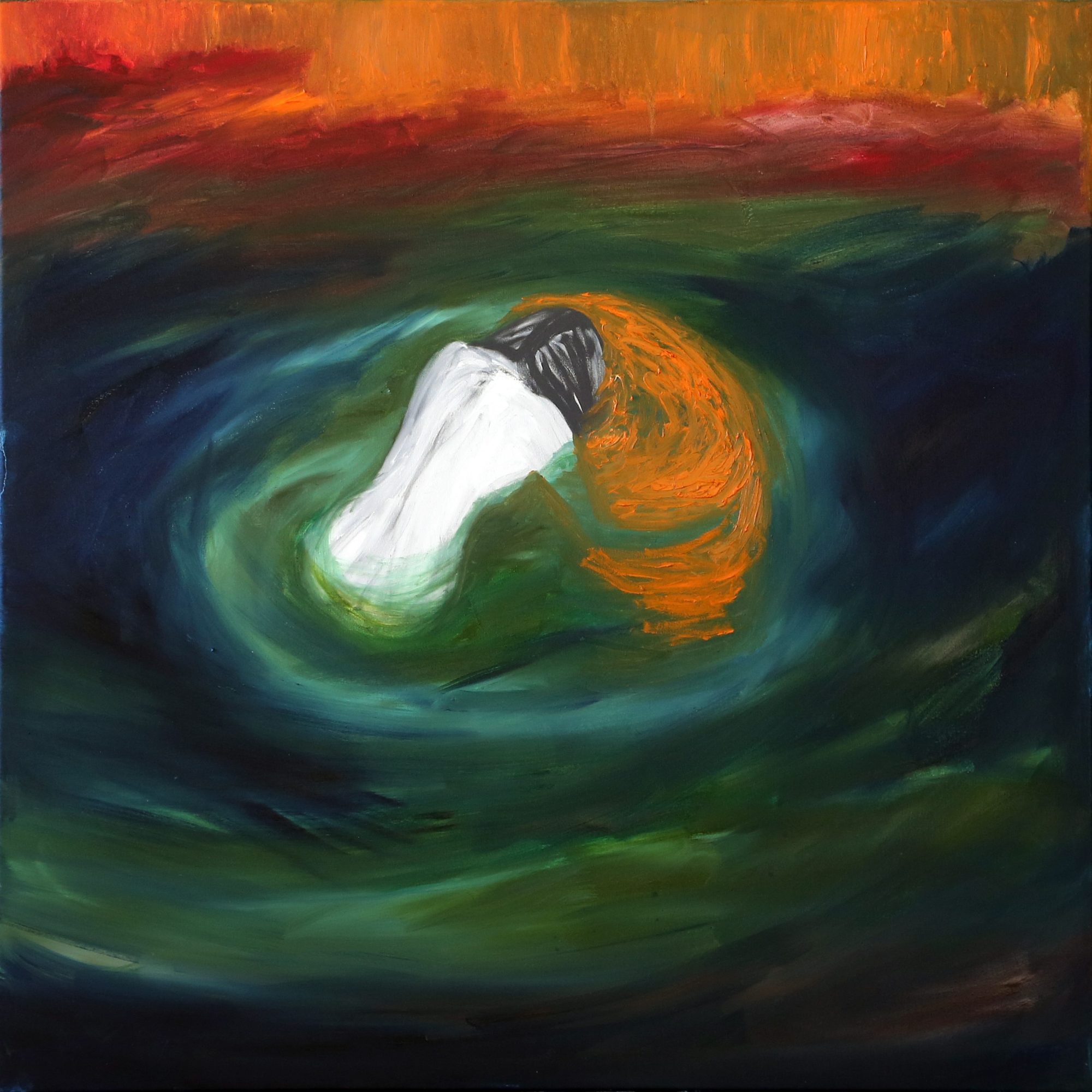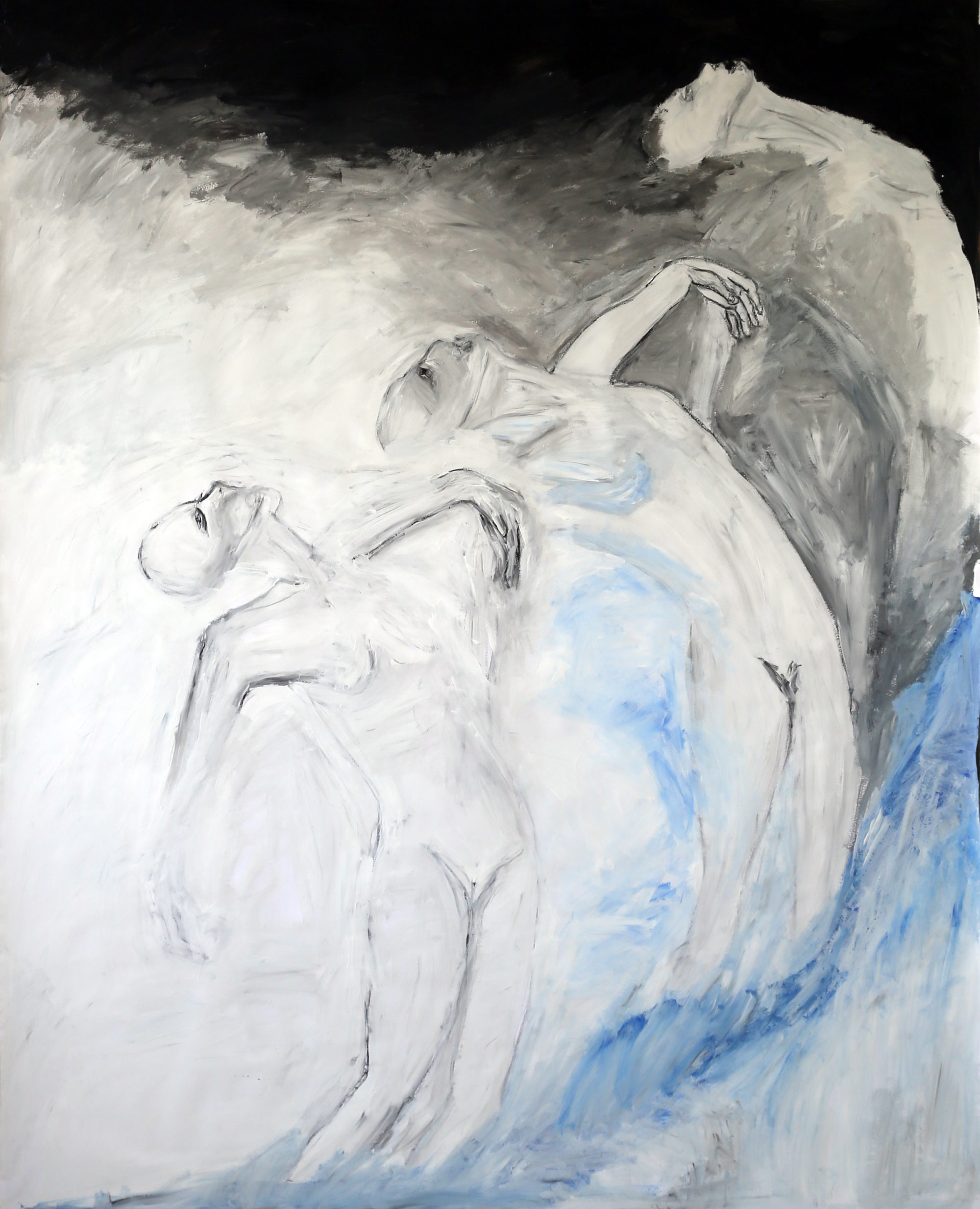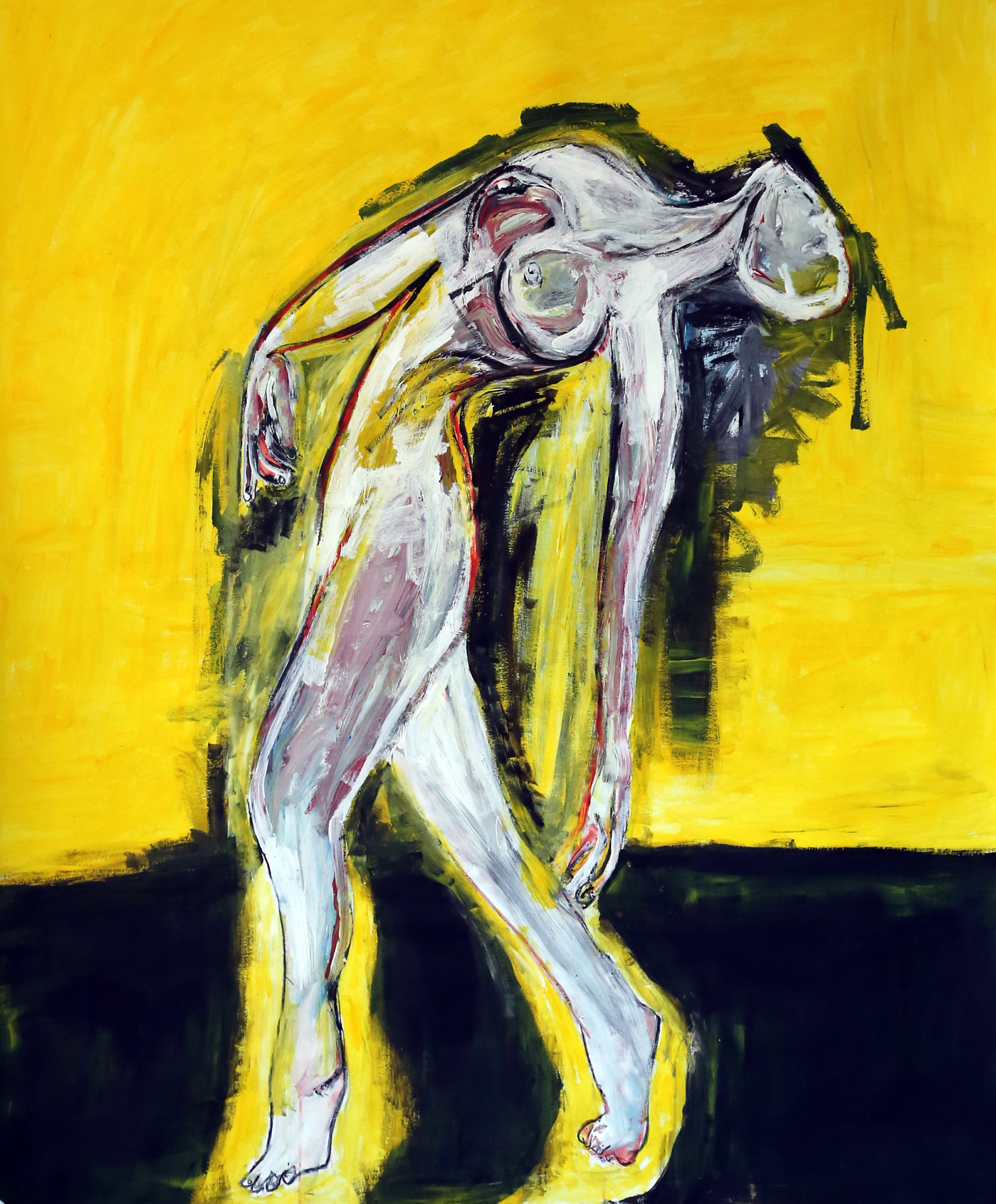For the first time Jennifer is consiously experimenting with symbolism in her work. Inspired by Greek mythology and how views on the female body are relatable in contempory culture. The reference of mythological characters add meaning to the paintings. With regard to meaning, the images of the women in her paintings are rejecting the consumption of the gaze on their naked bodies. They are not ashamed but silently and playfully protesting the explotation of the female body in contemporary society and media. Again the idea of a voyeuristic gaze is at play.
Quarantaine (2020)
The image of a single naked female figure has dominated Jennifers work for the majority of her practice. Before the corona virus crisis her work had begun to shift and was developing into multiple figures, a statement contemplating on the rise of feminism and the female gaze.
However, as the corona virus hit this now seemed futile in her work and not a true representation of what was happening in the world. As quarntine began Jennifer created larger works on canvas of figures alone separated by walls. The social distancing rules emphasing the interconnected network of relationships that give meaning and purpose. Figures are shown together as a representation of connectedness despite the situation.
With limited access to her studio Jennifer began creating smaller works on paper with ink and acrylic. This smaller scale allowed for a faster pace of working. It seemed to come natural in an emotional space to express freely, experiment with the figures more and break through habits. This is the first time upside down heads begin to appear in her work. The result is a series of smaller work on paper of the upside down world we are living in today.
Multiples (2019-2020)
In this smaller series of work ideas of the female gaze continue and come to the fore. For the first time mutiples of females begin to appear together, a direct comment on the rise of the me too feminist movements and fight for equality. The idea of a male gaze is completely rejected. These women are presented as if no one is looking, watching or judging. They are free to explore, tease and explore their own sexuality and representation of their bodies. Jennifer is playing more with abstraction and the idea of an abstract story telling in each painting.
Jennifer is focused on the female gaze and also looking more at the idea of a voyeuristic gaze. Something we have become very accustomed to and at times completely umaware of as a society.
This series was abandoned due to the coronavirus. Jennifer returned to the ideas expressed in this series in her newest series of works with the working title Methodology.
The Self Portrait (2018-2019)
In this series, Jennifer explores the representation of the pregnant nude. This series was painted while Jennifer was pregnant with her second child. During her first pregnancy she delibertely avoided the topic of pregnancy for fear of being considered overly ‘feminine’and of painting female topics.
Visual representations of the female nude during stages of providing life are taboo. Birth is messy. Nobody wants to talk about cutting, stitches and blood and afterbirth. Images of mother and child still adhere to one of the classical madonna and child , which throughout history were usually painted by men. Breastfeeding in public is still a social issue. Through her paintings, Jennifer challenges the representation of the female body in contemporary culture. We have become familiarized to seeing images of glossy, beautiful airbrushed women, with beautiful bodies, sexualised to sell products. Her painting of a woman during pregnancy or moments after giving birth redirects the gaze on the female body from the historical “male gaze”. Her Self Portrait series challenges a popular narrative about women and encourages people to question the way they have become accustomed to thinking about, looking at and seeing the female body.
Self Reflections (2017-2018)
Self reflections is the first series where Jennifer really began to study the traditional gaze in painting and the concept of a female gaze. Jennifer questions -who is in control of the image? When looking at the female nude in art, we often reflect on the age-old male gaze and look at the female nude from the sexualised perception of the male. However, how regularly do we question the artist? Are we able to differentiate the female nudes seen through a male artist’s eye, in comparison to a female’s and what kind of power does this reclaiming give to a female artist.
With regard to meaning, the images of the women in Jennifers paintings are rejecting the consumption of the gaze on their naked bodies. They are not ashamed but silently protesting the explotation of the female body in contemporary society and media. They are covering their bodies, seducatively exposing a breast, covering their faces, turning away from the gaze or defiantly challenging you to look at them. In no way are these women presented in a way that seeks approval. However they challenge the viewer to interact and respond to how women are individually reclaiming the representation of their own bodies.
Nasty Women (2017)
Quite often during the development of a series of work Jennifer works on smaller side projects. Nasty women is one of these series. Made during The Deconstructed Image Series and created as a response to the now infamous quote “grab em by the pussy”. These paintings were specifically painted for the united response by women all over the world with the Nasty Women exhibitions. Jennifer participated in 2 of these exhibitions, at Pallas Projects/Studios, Dublin , Ireland and in Alkmaar the Netherlands.
Here Jennifer completely rejects the ideal representation of “woman” as an object of male pleasure. What exactly is a “Nasty Woman”, what does a nasty woman look like? These questions were the inspiration behind Jennifers paintings. Other words for nasty include unpleasant, disagreeable, disgusting, offensive, revolting, hideous, frightful, foul and dirty. Are these the definitions of woman? Is this what she looks like?
The Deconstructed Image (2016-2017)
The Deconstructed Image, is a departure from previous working methods Jennifer used in her work. A change in direction of painterly expression and style that has previously featured multiple layers and contrasts in terms of meaning, texture and technique. This series focuses on a stripping down of unnecessary detail and control.
All of Jennifers previous paintings began as a line drawing of the female figure. The use of drawing and line used to start the visualization process, create movement, composition and spacial awareness. However these lines and mark makings became lost and dissapeared through the process of constructing the painting and building up of layers.
Through this series of paintings Jennifer to replace the depth created previously through her style of layered painting. The different works can be presented side by side in series of 5-10 images that visually explain her process of constructing paintings. In a sense she seeks to deconstuct and reveal the layers of paintings that often became lost through her focus of working towards a finished piece. This creating an understanding of the structural development of her work, for herself and the audience.
Chrysalis (2015)
The series title “Chrysalis” refers to an exploration of image making and painting techniques that the artist was recognising in her work. This process involved working the oil and the acrylic together and was about understanding the structural composition of medium and of image making. This experimentation was coming to the fore more than in previous works. The images of the female nudes present a sense of emerging into or out of something, constant and without conclusion. Unconsciously, veils started appearing in the paintings.
A lot of the images seem very deathly, or like shadows, and there is a sense of a connection with the past. The figures loom larger than the landscapes, representing a tension between the two, a struggle between identity and all that surrounds it. There is a feeling of flux that continues through each of the pieces in the series, but also a sense of stillness.
Thy Self is No Self (2014)
In this series, shadows begin to emerge alongside the figures, giving a sense of a connection with the past. The figures loom larger than the landscapes, representing a tension between the two, a struggle between identity and all that surrounds it. There is a feeling of flux that continues through each of the pieces in the series, but also a sense of stillness. Multiple figures appear for the first time. The paintings use both oil and acrylic, though oil has more of a presence than in previous works.
Having relocated to The Netherlands, and being the only member of her family not based in Ireland, the artist has a sense that she has dislodged but also gave new dimensions to her identity. This series is about the processing of identity, about how you ground yourself within the narratives of nationality, family, place and self.
_Scape(s) (2013)
Scape(s) was the first series created by Jennifer Smith following an extended period away from her art practice. She was re-exploring her previous figurative works, while channeling new concepts and aesthetics. This is where we see her use charcoal line drawing as a starting point, and where the line as a key form of mark making takes prominence. As well as a study of contrasts and texture, there is a relationship between control and abandon evident.
There is a sense of transition in the works, not just through the emerging styles, but also in the content of the images. The landscapes seem close and emotive. Jennifer had recently relocated to the Netherlands, and the textures reflect loose wild terrain of the west of Ireland. The nude figures sink into or are juxtaposed against this backdrop, and at times become the landscape, the textures and colours of one landscape traveling onto body in another painting.
